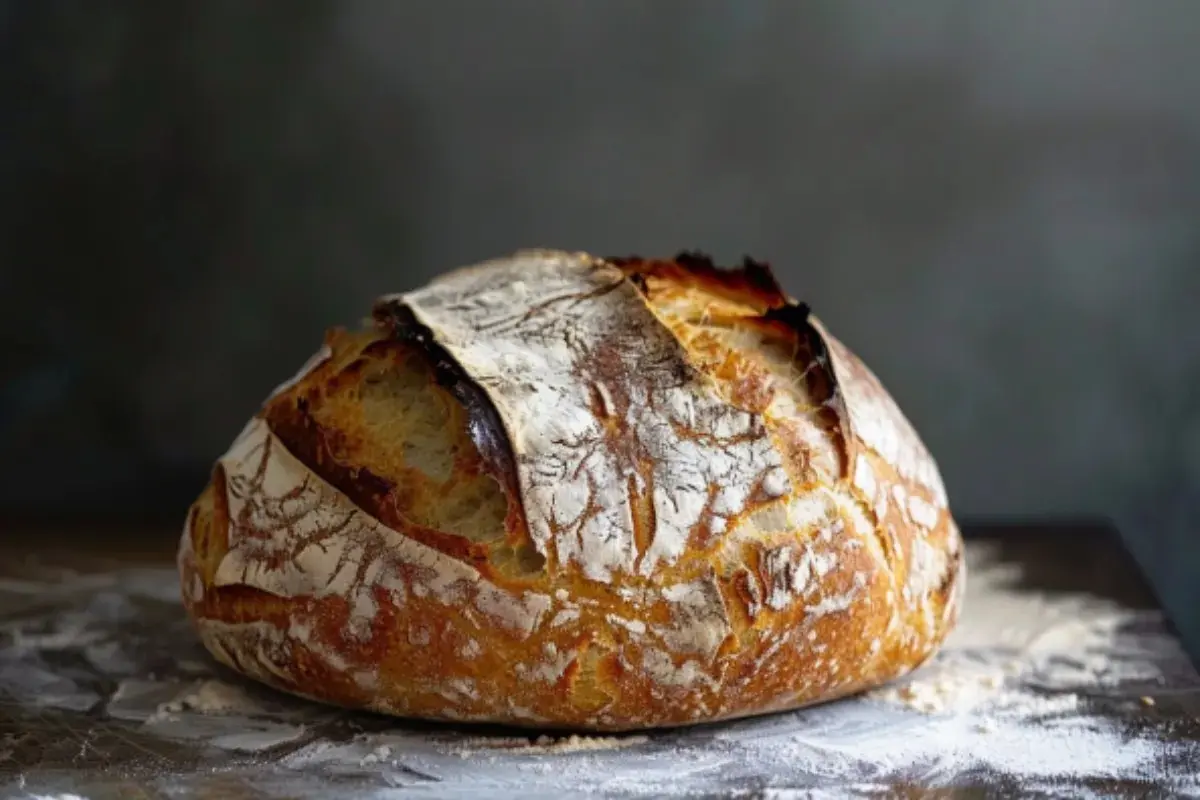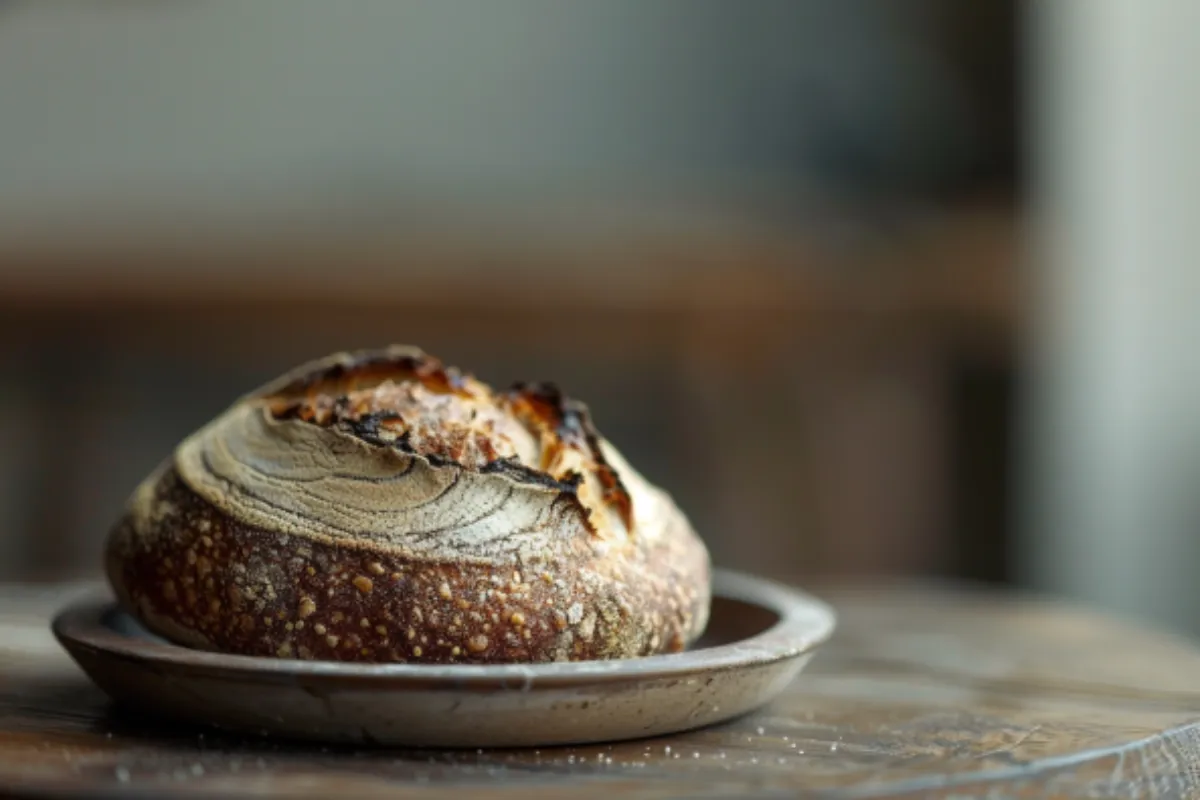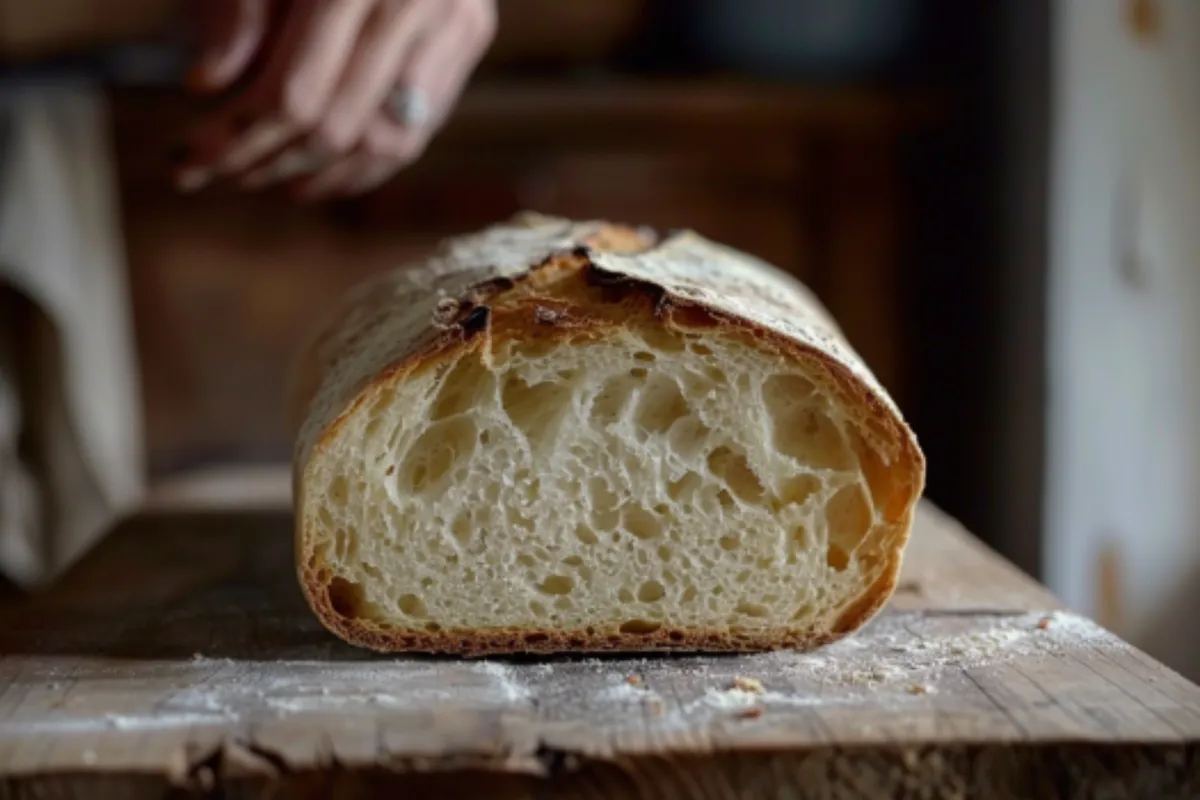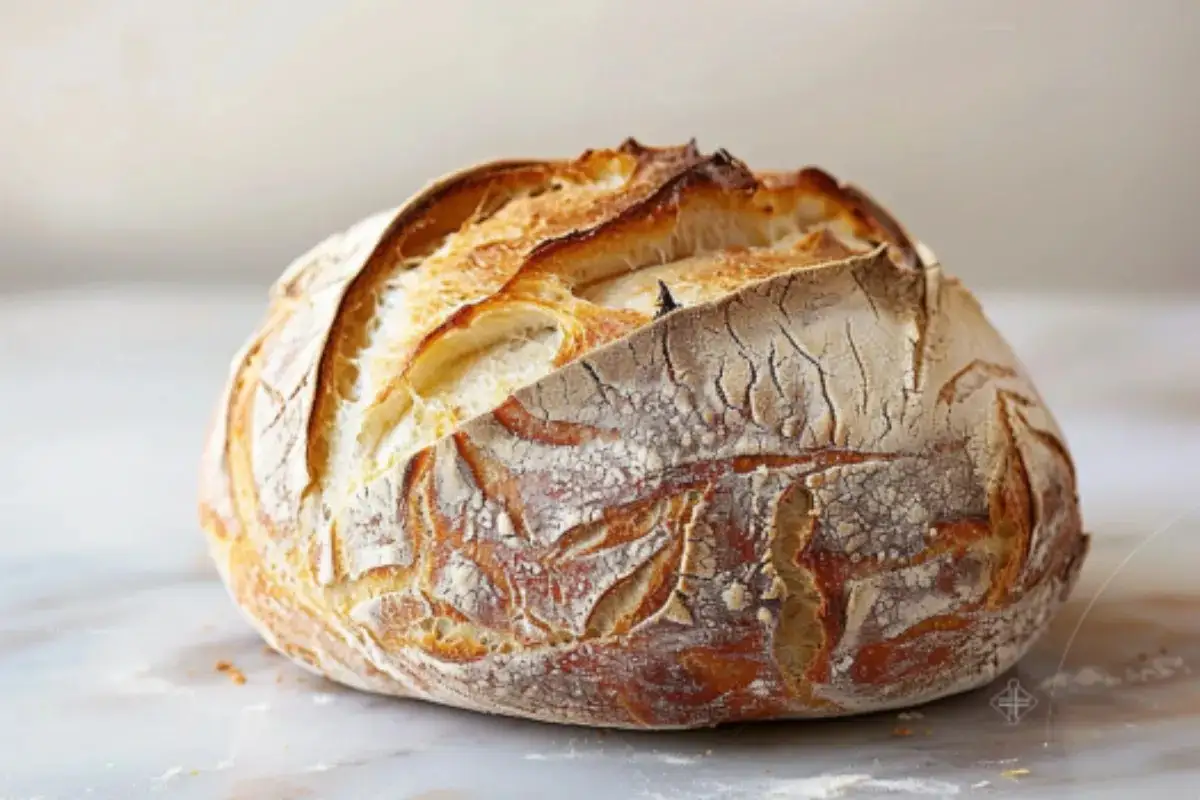Sourdough bread has a long and storied history, tracing back thousands of years to ancient civilizations. Renowned for its distinctive tangy flavor and chewy texture, this bread has been a staple in many diets worldwide. However, there are situations when you should avoid eating sourdough bread. Whether it’s due to cultural restrictions, dietary preferences, or concerns about specific ingredients, understanding these scenarios can help you make informed choices about when to enjoy or avoid this popular bread.
A Brief History of Sourdough Bread
Sourdough is arguably one of the oldest forms of leavened bread. It dates back to at least 4,000 B.C. in ancient Egypt. Unlike modern bread, which uses commercial yeast to rise, sourdough relies on a natural fermentation process. A mixture of flour and water, known as a starter, is left to capture wild yeast and bacteria from the environment. This starter is then mixed into the dough to make the bread rise.
Throughout history, people have valued sourdough for its long shelf life and unique flavor, which results from the lactic acid that fermentation produces. This bread-making technique spread from Egypt to other parts of the world, becoming a staple in European, Middle Eastern, and American diets. Today, sourdough is enjoying a resurgence in popularity, particularly among home bakers and artisan bakeries who appreciate its rich flavor and natural ingredients.
The Art of Sourdough Preparation

The process of making sourdough bread is as much an art as it is a science. Unlike other types of bread that bakers can make in a few hours, sourdough requires patience, attention, and a bit of intuition.
- Creating the Starter: The first step in making sourdough is to create a starter, a living culture of flour and water that captures wild yeast and bacteria from the environment. This starter needs to be fed regularly with fresh flour and water to keep it active.
- Fermentation and Proofing: Once the starter is active, it’s mixed with more flour and water to create the dough. The dough is then left to ferment for several hours. This fermentation period is crucial for developing the sourdough’s flavor and texture.
- Shaping and Baking: After fermentation, the dough is shaped and allowed to proof again. Finally, it is baked in a hot oven, often with steam, to create a crispy crust and chewy interior.
Making sourdough is a time-intensive process that requires a bit of experimentation to get right. However, many bakers find the process rewarding and worth the effort for the unique flavor and texture it produces.
Cultural Significance of Sourdough Bread
Sourdough bread holds a special place in many cultures worldwide. Here are a few examples of its significance:
- San Francisco Sourdough: In the United States, sourdough bread is closely associated with San Francisco. During the California Gold Rush in the mid-1800s, miners carried sourdough starters with them for a reliable source of bread in remote areas. The unique bacteria found in San Francisco’s foggy climate, Lactobacillus sanfranciscensis, gives the city’s sourdough its distinct tangy flavor.
- Russian Rye Sourdough: In Russia, rye sourdough bread, known as Borodinsky, is a staple. Bakers make this dark, dense bread with rye flour, molasses, and coriander seeds, which offers a deep, slightly sweet flavor. Traditionally, people serve it with soups or top it with fish.
- German Sourdough Varieties: Germany is famous for its diverse bread culture, and sourdough is a key component. German bakers often make sourdough varieties, like Vollkornbrot (whole grain bread) and Roggenbrot (rye bread), using a mix of rye and wheat flours. These ingredients create hearty loaves that pair well with cheese, meats, and sausages.
- French Pain de Campagne: In France, sourdough is often made as a rustic loaf called Pain de Campagne. This “country bread” typically combines white flour with whole wheat or rye and is baked in large, round shapes. It has a thick, crunchy crust and an airy crumb, making it perfect for sandwiches and toasting.
Alternative Uses for Sourdough Bread
If you have leftover sourdough or a batch that didn’t turn out quite as expected, there are plenty of creative ways to use it:
- Sourdough Croutons: Cut leftover bread into cubes, toss with olive oil, garlic, and herbs, and bake until crispy. Sourdough croutons add a tangy crunch to soups and salads.
- Bread Pudding: Use stale sourdough in bread pudding recipes for a unique twist. The tangy flavor of sourdough pairs well with sweet custard and fruit.
- French Toast: Sourdough’s chewy texture and tangy flavor make it an excellent choice for French toast. Soak thick slices in a mixture of eggs, milk, cinnamon, and sugar, then cook in a skillet until golden brown.
- Sourdough Breadcrumbs: Process stale sourdough into breadcrumbs for a flavorful topping on casseroles, pasta, or roasted vegetables.
- Sourdough Discard Pancakes: Use sourdough discard to make light, fluffy pancakes with a subtle tang. Many recipes incorporate baking soda or powder to help the pancakes rise.
Common Mistakes When Working with Sourdough
For those new to baking sourdough, the process can be challenging. Here are some common mistakes to avoid:
- Not Feeding the Starter Regularly: A sourdough starter is a living culture that requires regular feeding. If left unfed, it can become weak or even die, affecting the rise and flavor of the bread.
- Using the Starter Too Soon: It’s essential to wait until the starter is fully mature and bubbling before using it in a recipe. An immature starter may not have enough active yeast and bacteria to make the dough rise properly.
- Overproofing or Underproofing the Dough: Proofing time is crucial in sourdough baking. Underproofing can lead to dense, heavy bread, while overproofing can result in a collapsed loaf with a gummy texture.
- Ignoring Temperature: The temperature of your kitchen affects the fermentation process. If it’s too cold, fermentation will slow down; if it’s too hot, the dough may overproof. Using a proofing basket or a controlled environment can help manage temperature.
- Skipping the Steam: Steam is necessary to achieve a crispy crust on sourdough bread. If your oven doesn’t have a steam function, create steam by placing a pan of water at the bottom of the oven or using a spray bottle to mist the dough during the first few minutes of baking.
When Sourdough Might Not Be the Best Choice

Now, let’s delve into some scenarios where you might want to reconsider eating sourdough bread:
- Cultural and Religious Restrictions: Some cultures and religions have specific dietary rules or fasting periods that may restrict the consumption of fermented foods like sourdough. For example, during Passover, observant Jews avoid leavened bread, including sourdough.
- Dietary Preferences or Choices: Individuals following a raw food diet, which avoids cooked and fermented foods, or those on a ketogenic diet that limits carbohydrate intake, may choose to avoid sourdough bread. Additionally, those avoiding fermented foods for personal reasons may need alternatives.
- Avoiding Specific Ingredients: Some sourdough recipes contain ingredients that might not align with a person’s preferences or dietary restrictions. For instance, some sourdough recipes use dairy, honey, or eggs, which may not be suitable for vegans or those with specific allergies.
Expanding Your Culinary Repertoire with Sourdough
Sourdough isn’t just for bread! Here are some creative ideas to use sourdough starters and discard in different ways:
- Sourdough Pizza Crust: Replace your regular pizza dough with a sourdough base for a flavorful crust with a satisfying chew. Sourdough pizza crusts can be made thin and crispy or thick and fluffy, depending on your preference.
- Crackers and Flatbreads: Use sourdough discard to make crispy crackers or flatbreads. Roll out the dough thinly, add your favorite seasonings, and bake until golden and crisp.
- Sourdough Bagels and Pretzels: For those who love to experiment, sourdough bagels and pretzels are a fantastic project. The chewy texture of sourdough pairs well with the dense, doughy nature of these baked goods.
- Sourdough English Muffins: Make your breakfast special with homemade sourdough English muffins. These muffins have a distinctive texture with a slightly tangy flavor, perfect for toasting and topping with butter or jam.
Tips for Storing and Preserving Sourdough Bread
Proper storage is crucial to maintain the freshness and quality of sourdough bread:
- Short-Term Storage: Keep sourdough bread at room temperature in a bread box or a paper bag for up to 3 days. This method helps retain the crust’s crispness while keeping the interior moist.
- Freezing: For longer storage, slice the bread and freeze it in a resealable bag. This makes it easy to grab a slice or two whenever you need it. Toast the slices directly from the freezer for a quick breakfast or snack.
- Avoid Refrigeration: Refrigerating bread can cause it to become stale more quickly due to moisture loss. Instead, store it at room temperature or freeze it for longer shelf life.
Reviving Stale Sourdough
If your sourdough bread has gone stale, don’t worry! There are several ways to revive it:
- Rehydration: Sprinkle water on the crust and bake it in a preheated oven at 350°F (175°C) for about 5-10 minutes. This method helps restore some of the bread’s original texture.
- Bread Pudding or French Toast: Stale sourdough is ideal for making bread pudding or French toast. The slightly drier texture absorbs custards or egg mixtures well, enhancing the final dish.
- Toasting: Stale sourdough makes excellent toast. The toasting process brings back some of the bread’s crunch and enhances its flavor.
Sustainability and Sourdough
Baking sourdough at home can be a sustainable choice for several reasons:
- Minimal Waste: Unlike commercial bread, sourdough often uses minimal ingredients, and home bakers can control the portion sizes, reducing food waste.
- Utilizing Discards: Many recipes allow you to use sourdough discard, which would otherwise be wasted. Incorporate discard into pancakes, waffles, or other baked goods to minimize waste.
- Local Ingredients: Home bakers can source flour and other ingredients locally, reducing the carbon footprint associated with transporting commercial bread products.
Building a Sourdough Community

Making sourdough is more than just baking; it’s about community and sharing. Many bakers enjoy exchanging starters with friends and neighbors or joining online communities to discuss tips, recipes, and techniques. Sharing the sourdough culture helps foster a sense of community and allows bakers to learn from one another.
If you’re interested in getting started with sourdough, reach out to local bakeries or join a sourdough group. Many communities offer sourdough workshops or classes where you can learn hands-on techniques and connect with other baking enthusiasts.
Why You Might Need to Avoid Eating Sourdough Bread
There are several reasons when you should avoid eating sourdough bread. For instance, some cultural and religious practices discourage the consumption of fermented foods, including sourdough. Additionally, certain dietary plans, such as low-carb diets or raw food diets, may outline periods when you should avoid eating sourdough bread to adhere to specific nutritional guidelines. Knowing these factors is essential for anyone wondering when you should avoid eating sourdough bread.
Situations Where Sourdough Bread Isn’t Ideal
There are also specific situations when you should avoid eating sourdough bread due to personal dietary choices or restrictions. For example, if you follow a vegan diet and the sourdough contains dairy or honey, that’s a clear instance when you should avoid eating sourdough bread. Similarly, individuals with allergies to ingredients like wheat or yeast will find that there are moments when sourdough bread may not be suitable for them. Identifying these cases helps you understand precisely when you should avoid eating sourdough bread.
Practical Tips for Knowing When to Avoid Eating Sourdough Bread
It’s also crucial to recognize practical circumstances when you should avoid eating sourdough bread. For example, if your sourdough bread has gone stale, developed mold, or has an off smell, these are definite signs when you should avoid eating sourdough bread. Knowing how to store your bread properly can help maintain its freshness; here are some bread storage tips to guide you.
Frequently Asked Questions About Sourdough Bread
1. What makes sourdough bread different from regular bread?
- Bakers make sourdough bread using a natural fermentation process with a starter of wild yeast and bacteria, which gives it a distinct tangy flavor and chewy texture. Unlike regular bread that uses commercial yeast, sourdough relies on natural leavening, resulting in a unique taste and longer shelf life.
2. Can I make sourdough bread without a starter?
- No, a starter is essential for making sourdough bread. The starter, a mixture of flour and water, captures wild yeast and bacteria from the environment. These elements ferment the dough and create the bread’s rise and flavor.
3. How do I know if my sourdough starter is healthy?
- A healthy sourdough starter should be bubbly, have a pleasant sour smell, and double in size within a few hours of feeding. If you notice an off odor, mold, or discoloration, the starter may be contaminated and should be discarded.
4. How long can I keep my sourdough starter?
- If maintained properly with regular feedings, a sourdough starter can last indefinitely. Some starters are known to be decades or even centuries old, passed down through generations of bakers.
5. What can I do with sourdough discard?
- You can use sourdough discard in various recipes, such as pancakes, waffles, muffins, crackers, and even pizza crust. Using discard creatively helps minimize waste and adds a subtle tangy flavor to different dishes.
Conclusion: When to Avoid Eating Sourdough Bread
Sourdough bread is more than just a food; it’s a culinary tradition with a rich history and a passionate following. Although it may not be suitable for everyone, its versatility, flavor, and cultural significance make it a staple worth exploring. Whether you’re baking it yourself or enjoying it from a local bakery, sourdough offers a unique and delicious experience. However, remember to consider when it might not be the best choice for you. Furthermore, explore alternative uses and creative applications to make the most of this beloved bread.
Understanding when you should avoid eating sourdough bread helps you make smarter dietary decisions. From cultural and dietary restrictions to practical concerns like spoilage, there are several times when you should avoid eating sourdough bread to ensure it fits well into your lifestyle.

